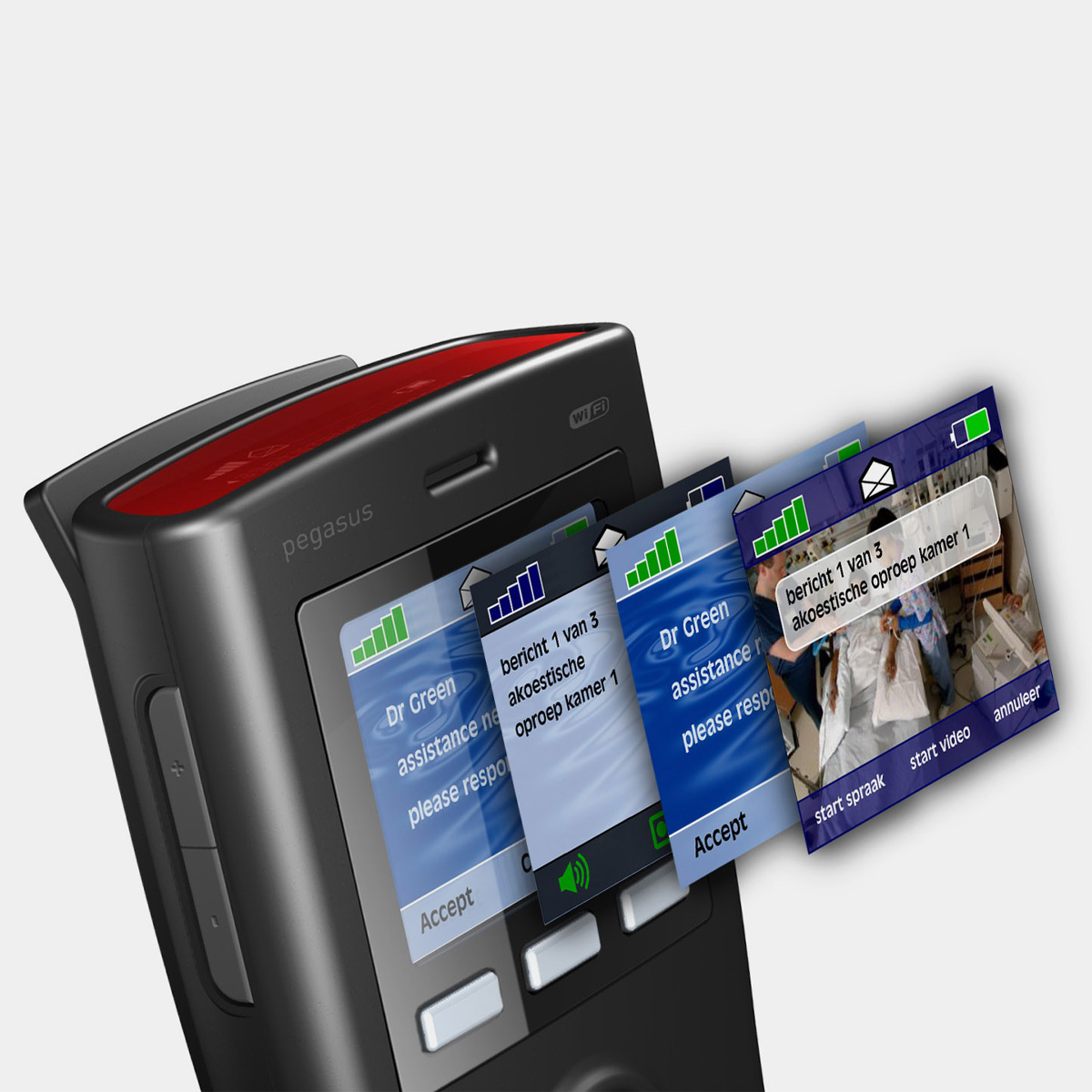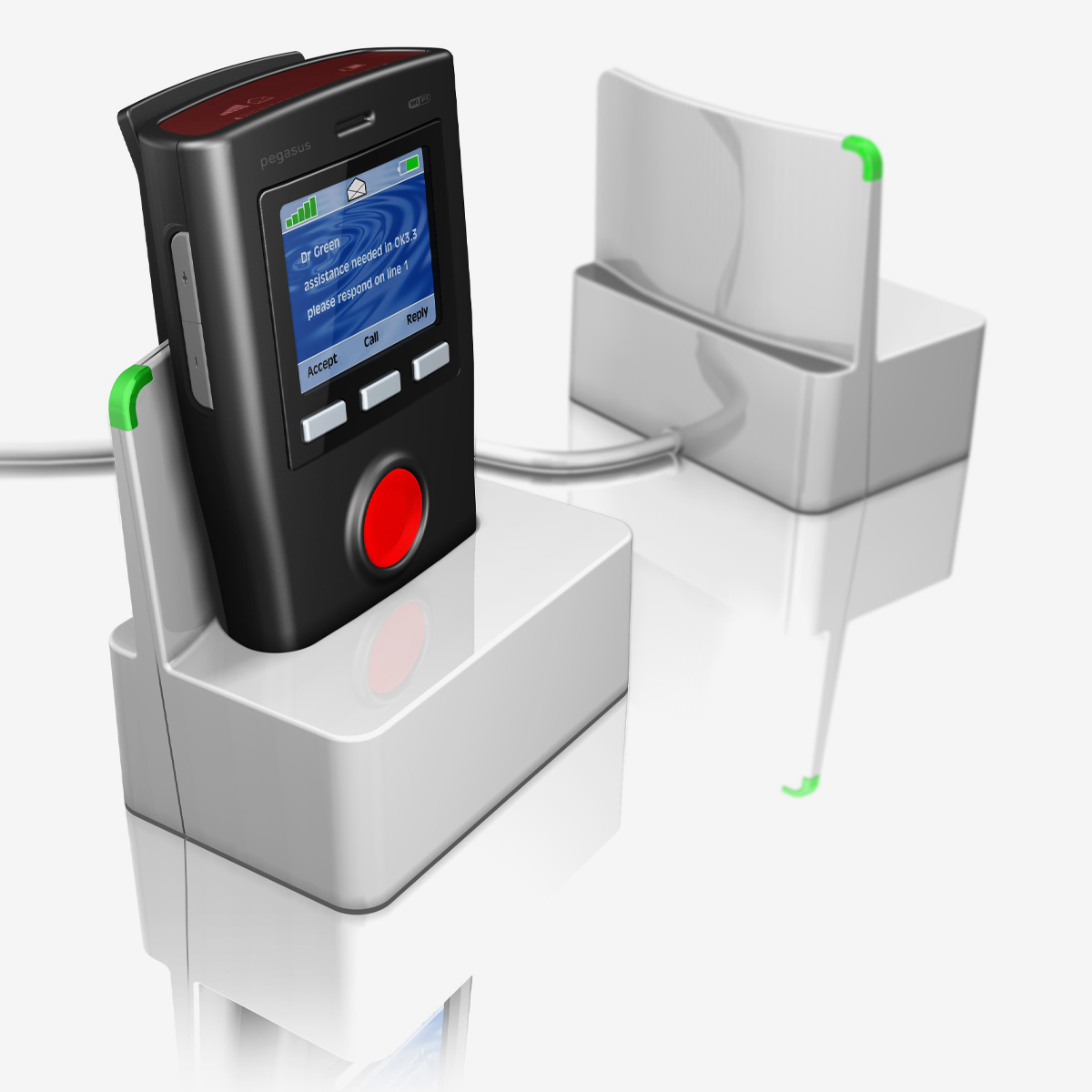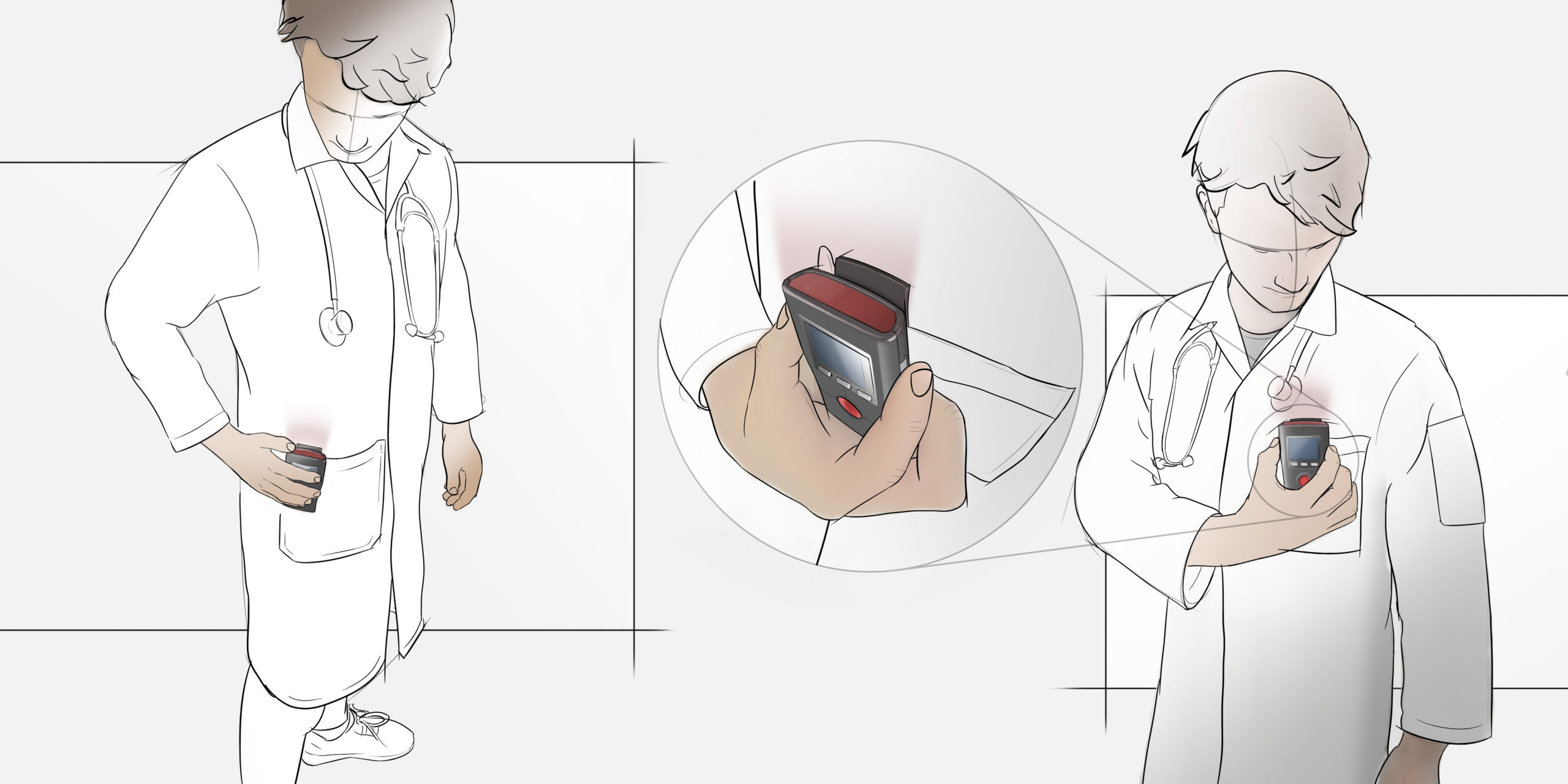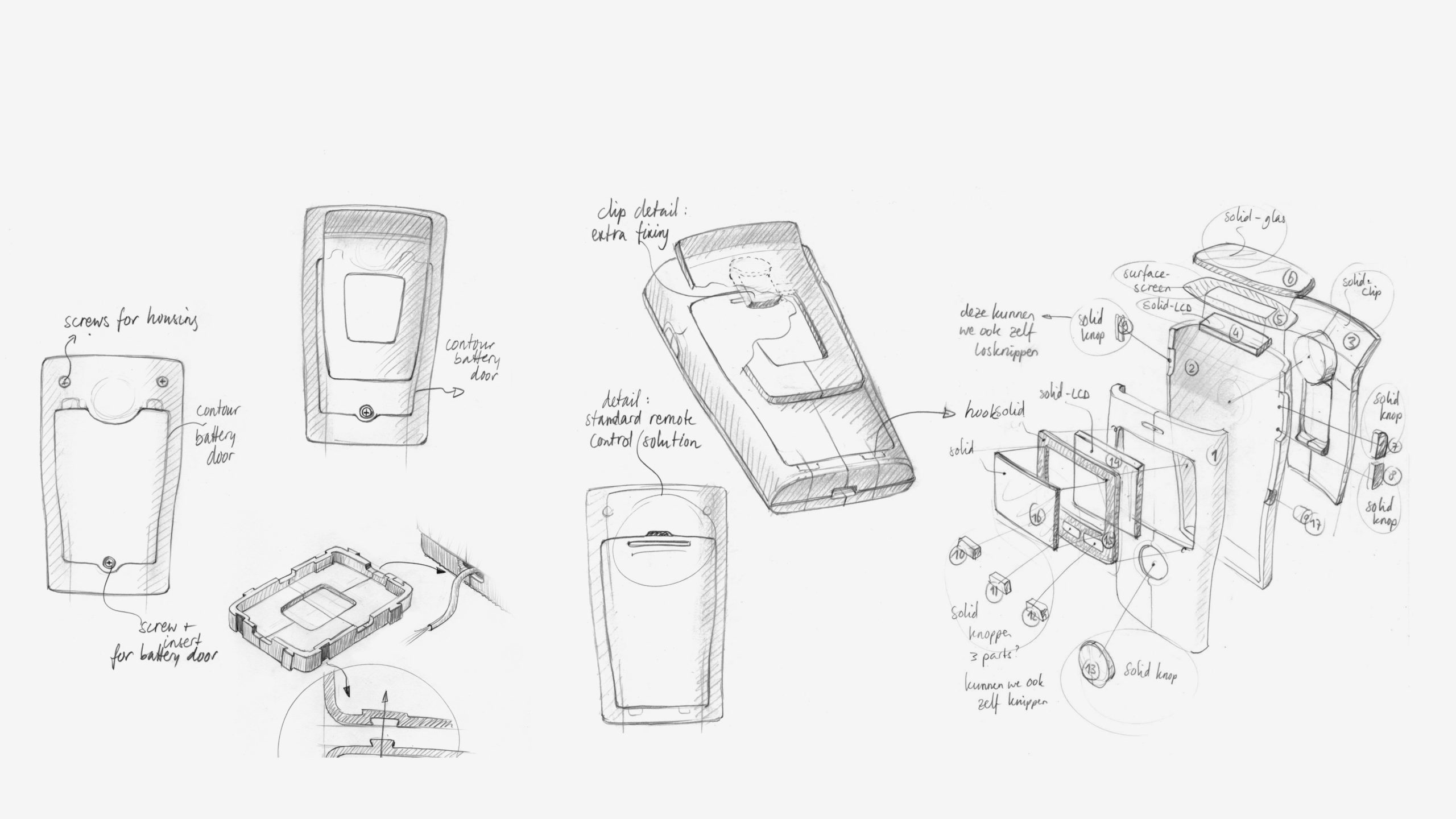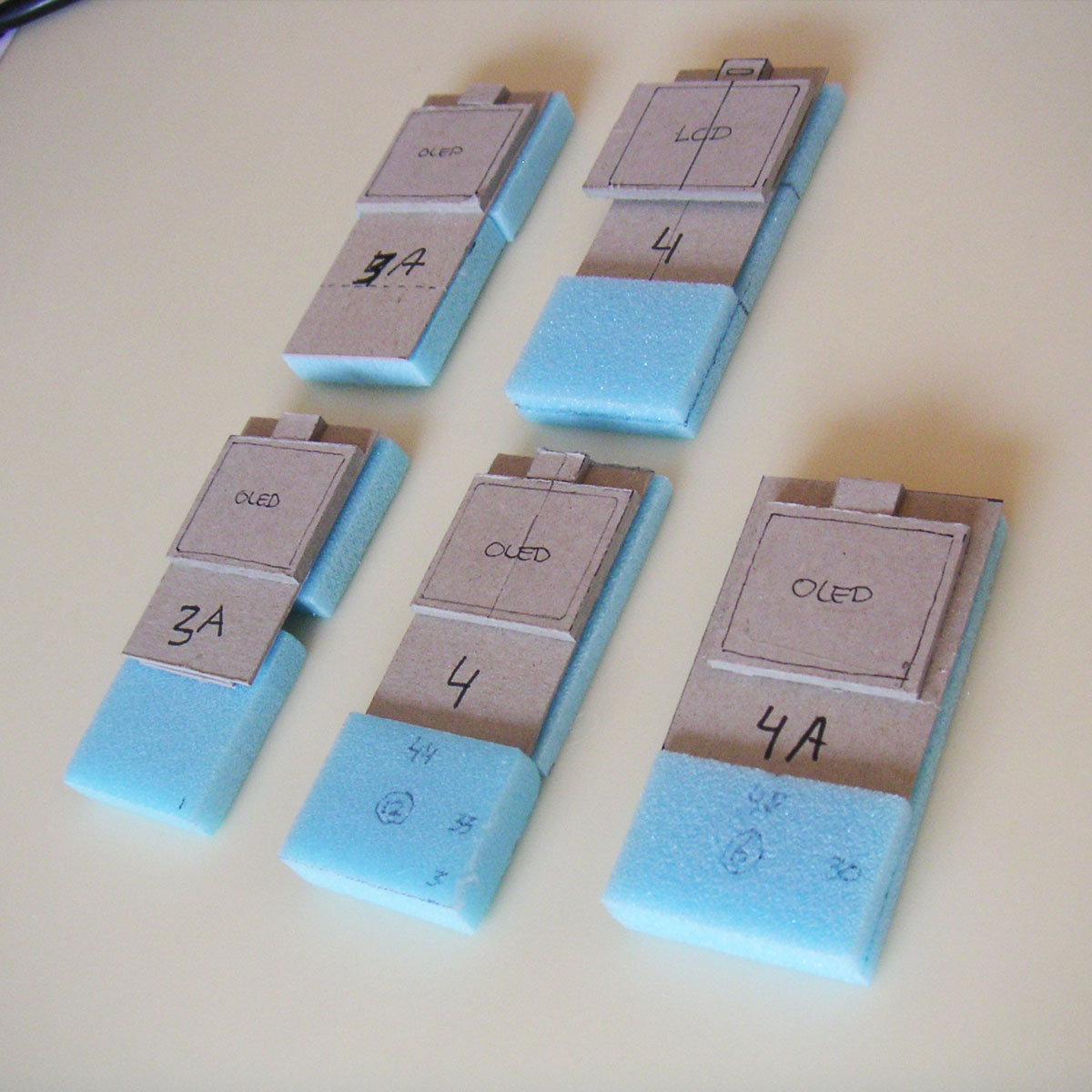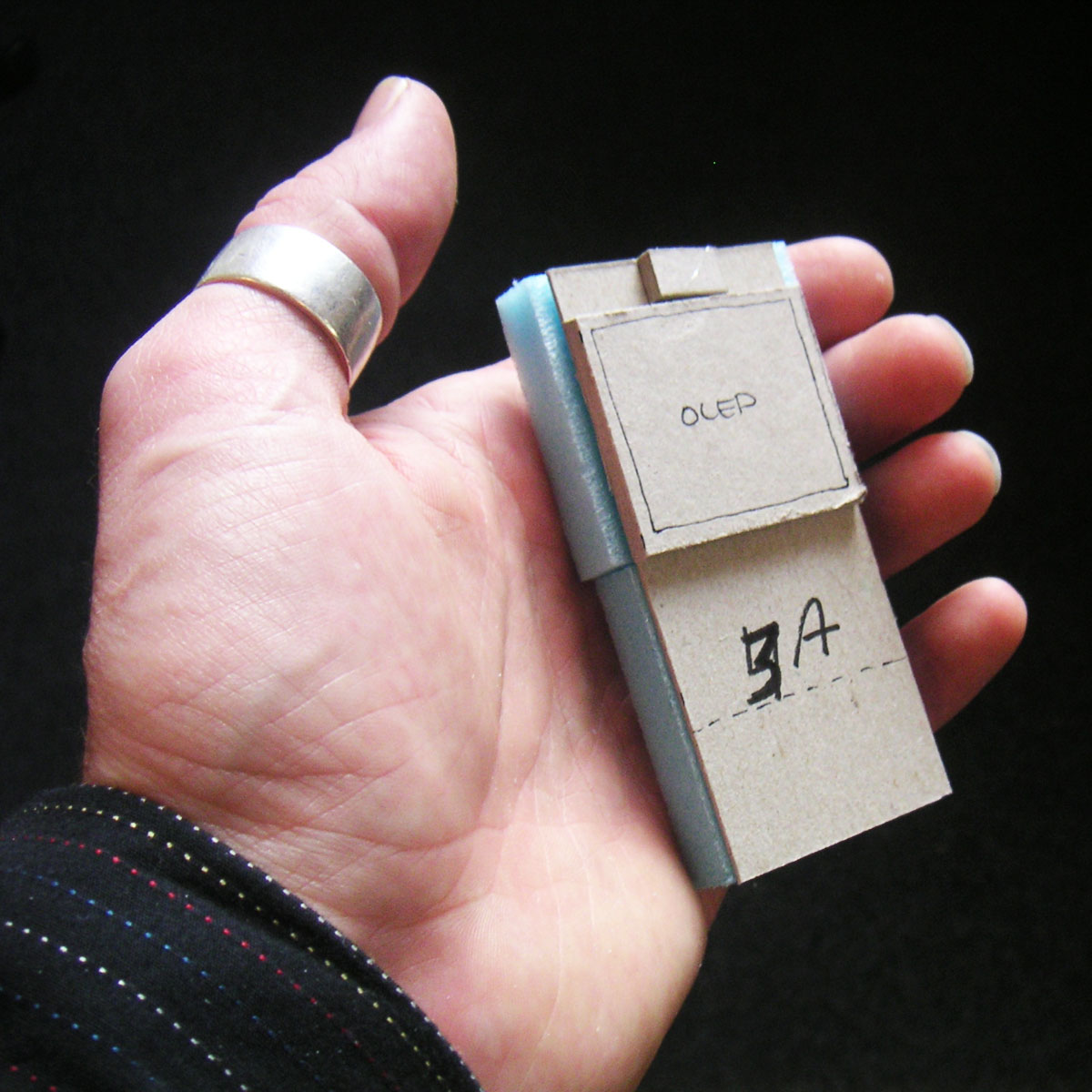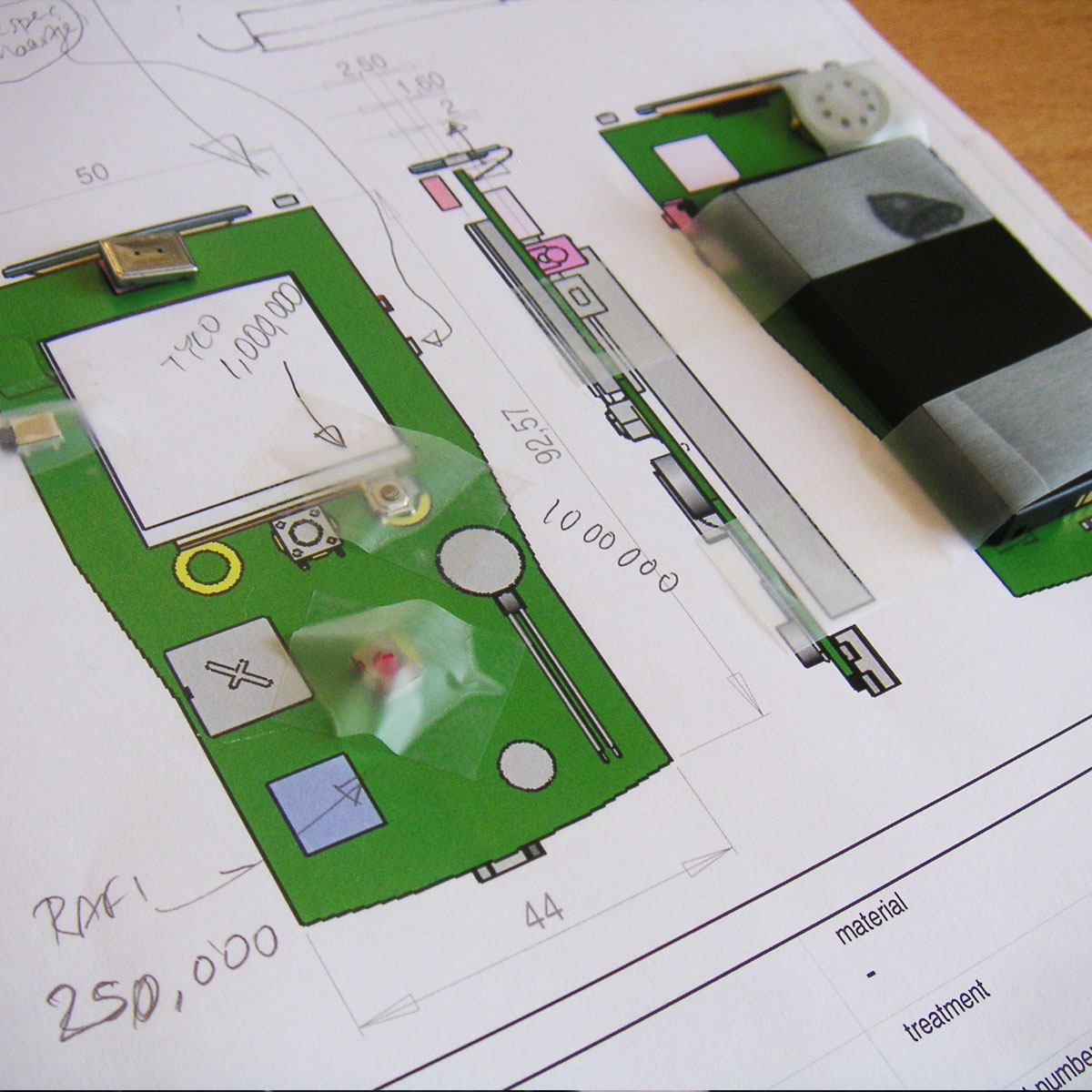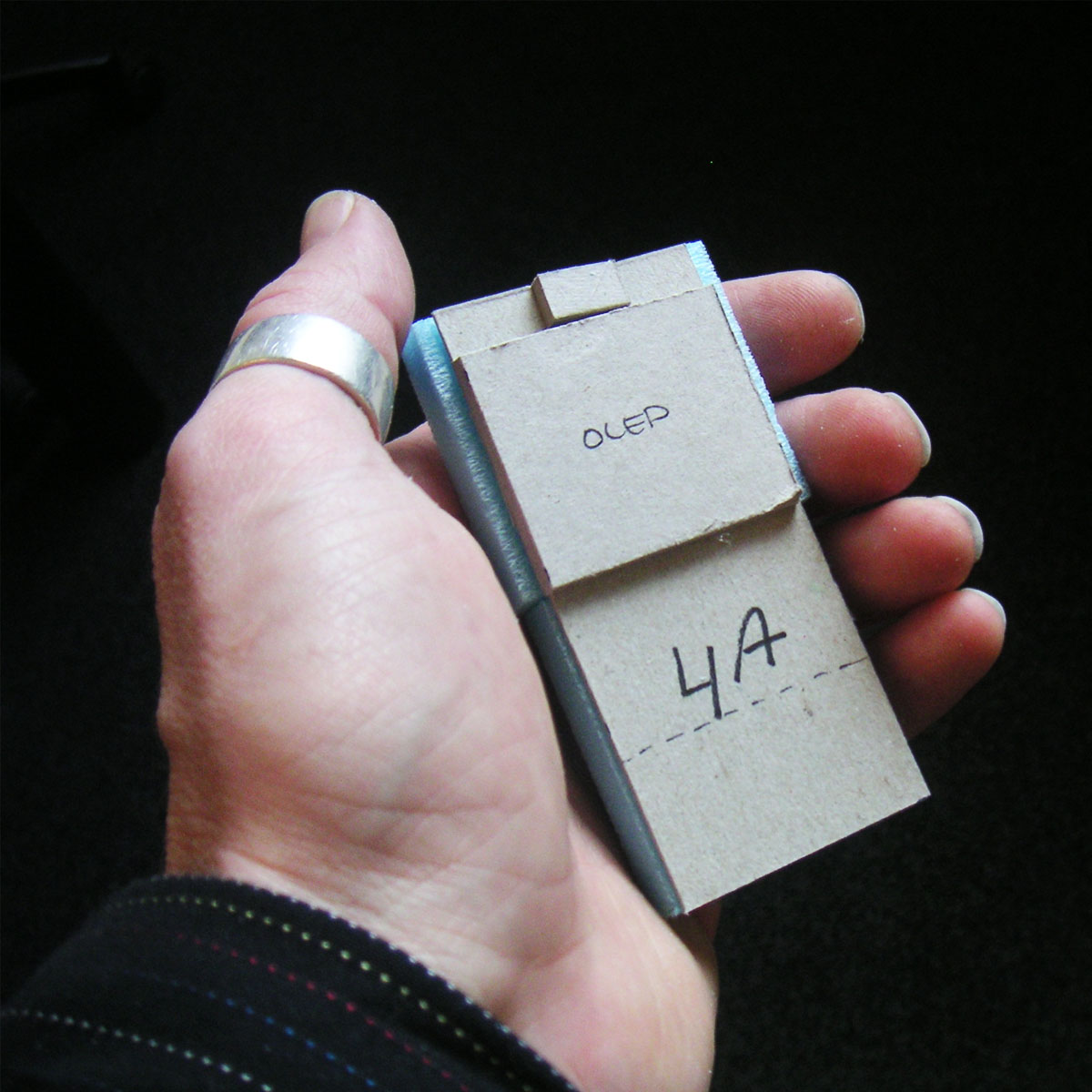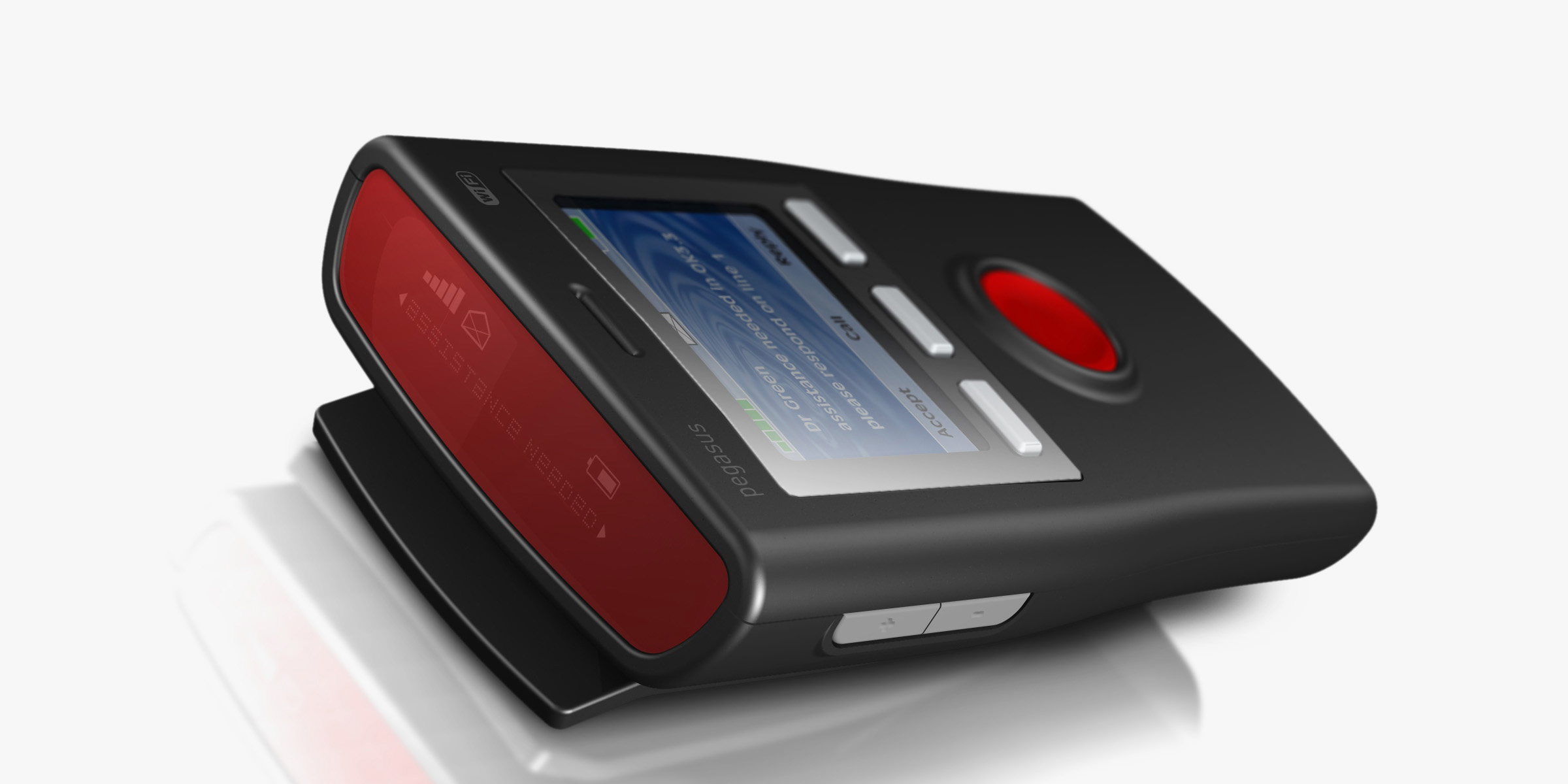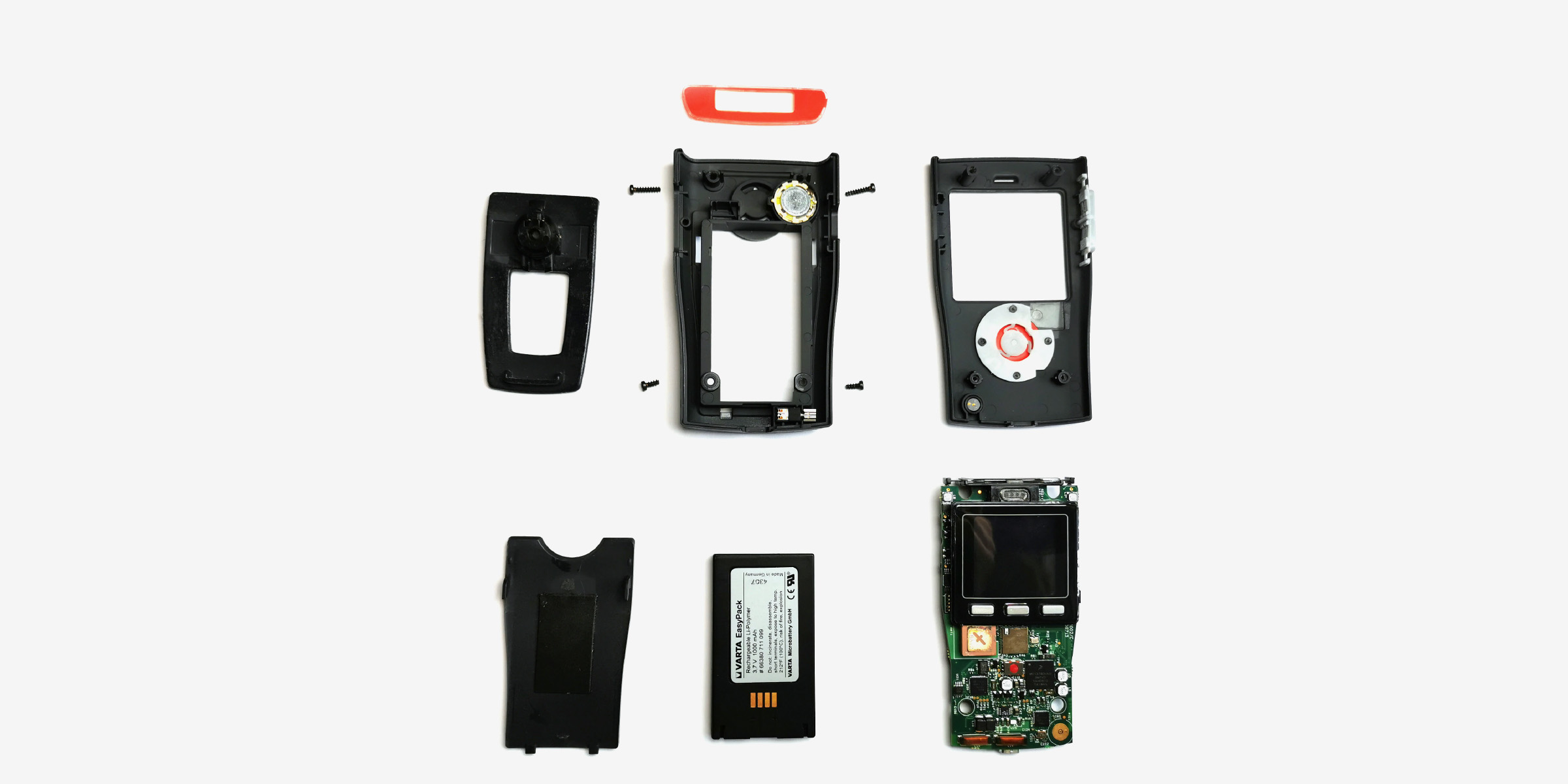Summary of the CLB PEGASUS
The Pegasus WiFi messenger is a new type of smart wearable , which is used by doctors and nurses for, for example, (video) calling, data, extensive reporting and medically certified alarms for resuscitation . CLB was looking for a useful and portable design for the housing. Scope designed a compact housing in consultation with the electronics developer and made a design for the total functionality and interaction of the Pegasus that fits well within a medical environment .
